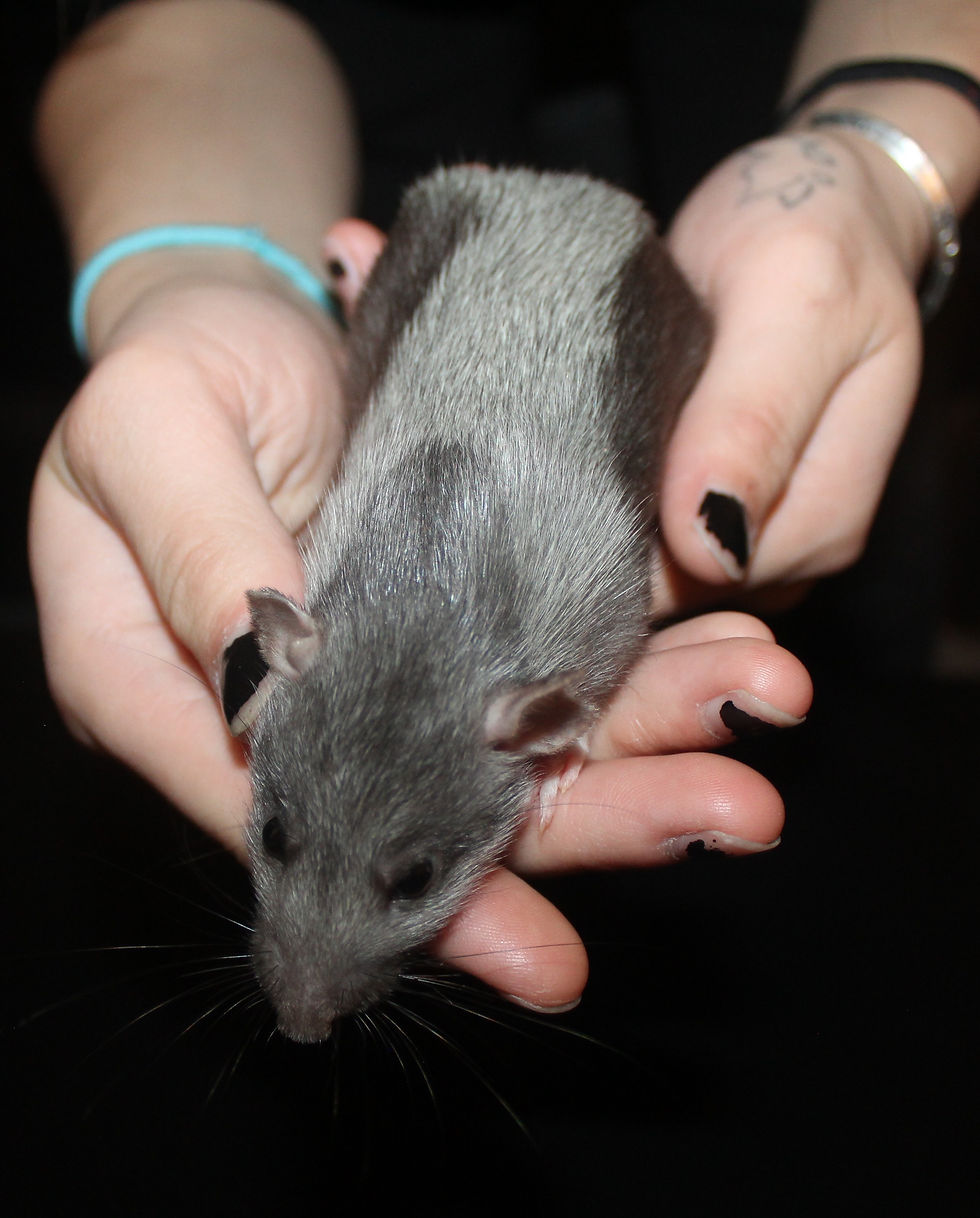How to Determine the Contagious Nature of URIs in Rats and Their Implications
- StormHaven Rattery

- Aug 4
- 4 min read
Updated: Sep 11

Upper Respiratory Infections (URIs) are a significant concern for pet rats, and understanding their contagious nature is key for effective management. These infections can lead to serious health issues if left untreated. In this post, we will examine the nature of URIs, their transmission, effective management methods, and their implications for the health of rats.
Understanding URIs in Rats
URIs in rats are often the result of viral or bacterial infections. Common symptoms include:
Sneezing: Often the first sign of infection.
Nasal Discharge: Mucous can indicate inflammation in the respiratory system.
Lethargy: An infected rat may be less energetic and active.
Difficulty Breathing: Listen for labored breathing or wheezing.
If untreated, URIs can lead to serious complications, including pneumonia. Early identification of these symptoms is crucial for enhancing recovery chances.
How URIs Are Transmitted
Direct Contact Transmission
Infected rats can easily transmit URIs through direct contact. A simple sneeze can disperse droplets containing the virus into the air. In shared living environments, transmission rates can spike dramatically. Studies show that in groups of rats, the infection spread can reach up to 70% if the initial infected rat is not isolated.
Moreover, grooming behaviors also play a role. If an uninfected rat brushes against or grooms an infected rat, it risks exposure to the pathogens.
Environmental Factors
The environment can harbor infectious agents. Research indicates that pathogens can survive on surfaces for several hours. Regular cleaning of cages, bedding, and food containers is essential. Keeping surfaces disinfected can cut down infection rates significantly.
Airborne Transmission
Though less common, airborne transmission can occur. If an infected rat releases the virus into the air, it can linger and infect others nearby. Ensuring good ventilation in the living space can help disperse these airborne particles, minimizing the risk of transmission.
Asymptomatic Carriers
Some rats can be carriers of URIs without showing any symptoms. These asymptomatic carriers can unknowingly infect healthy rats. This phenomenon makes managing outbreaks more complex. In a breeding situation, as many as 30% of carrier rats can transmit the illness without any visible signs of infection.
Signs to Look For
Identifying the symptoms of URIs early can help in controlling the spread of the infection. Key signs include:
Sneezing and Nasal Discharge: Watch for frequent sneezing and any runny nose.
Coughing: Listen for unusual sounds that may indicate trouble breathing.
Lethargy: Keep an eye out for changes in behavior, like less activity.
Loss of Appetite: A significant drop in food intake can indicate illness.
Consult a veterinarian immediately if you notice any of these symptoms.
Diagnosis and Treatment Options
Consulting a Veterinarian
Upon suspicion of a URI, scheduling a visit to a veterinarian experienced with small animals should be your first move. A thorough examination may lead to tests that clarify the nature of the infection, which can dictate treatment decisions.
Treatment Approaches
The treatment plan can vary based on the severity of the infection. For mild cases, your veterinarian may recommend supportive care, focusing on hydration and comfort. Research suggests that over 60% of mild URI cases can recover with proper home care.
In more severe cases, medications may be necessary. Antibiotics could be prescribed if a bacterial infection is suspected. Antivirals can also be considered, depending on the viral cause of the URI.
Home Care Strategies
Alongside veterinary treatment, consider these home care strategies to foster recovery:
Improve Ventilation: Make sure the cage resides in a well-ventilated area.
Keep the Cage Clean: Regularly clean and replace bedding to stop the spread of germs.
Monitor Food and Water Supply: Provide fresh food and clean water at all times.
Minimize Stress: Create a calm and secure environment for your sick rat.
Preventative Measures
Isolation Practices
If you have several rats and one shows URI symptoms, isolate the sick rat immediately. This action can drastically reduce infection transmission, keeping healthy rats safe.
Regular Health Check-Ups
Routine visits to the vet can help catch potential health issues early. Regular check-ups contribute to the overall wellbeing of your pet rat, increasing their chances for a happy, healthy life.
Socialization and URI Risks
Group Housing
When adding new rats to your group, be cautious. Quarantine newcomers for at least four weeks. This waiting period allows you to monitor for symptoms of illness before they are introduced to your existing pets.
Safe Practices in Breeding
For breeders, URI awareness is vital. Implementing preventive health screenings can go a long way in maintaining a healthy breeding population. Always separate visibly ill rats and avoid breeding those with respiratory symptoms.
The Importance of Awareness
Understanding how URIs spread among rats is essential for all owners and breeders. By adopting proper care strategies, such as timely isolation and regular vet visits, you can effectively manage the risks. Staying educated on health implications will strengthen the bond between you and your pets, leading to happier, healthier lives for your beloved rats.



Comments